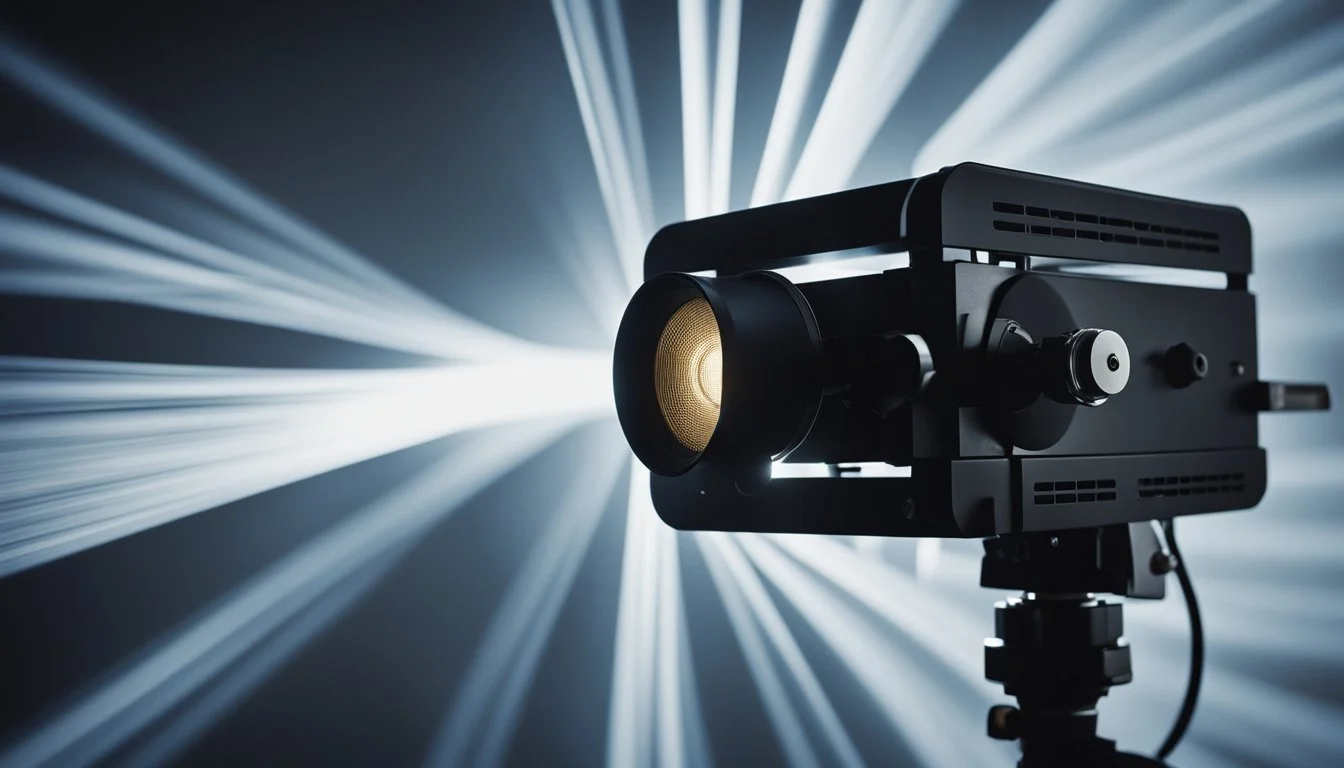Exploring Unconventional Narrative Structures in Film
Innovations and Trends
Film enthusiasts and creators alike are constantly seeking fresh methods to captivate audiences. Unconventional narrative structures have emerged as a powerful technique to break away from traditional storytelling and offer unique, compelling experiences. These methods challenge standard chronologies, blending timelines, and creating intricate patterns that keep viewers engaged and intrigued.
Unconventional storytelling isn't just about being different for the sake of it; it serves to evoke stronger emotional responses and a deeper connection to the film's characters and themes. By playing with time and space, these films invite audiences to piece together the narrative puzzle, thereby fostering an interactive viewing experience.
The rise of non-linear narratives and other experimental techniques showcases how the film industry is evolving. Famed directors and indie filmmakers alike are leveraging these structures to create memorable, thought-provoking cinema that stands out in a crowded market.
Foundations of Narrative Structure in Cinema
Narrative structure in cinema forms the backbone of storytelling. It provides a framework within which filmmakers can develop their stories. Typically, this structure offers a beginning, middle, and end, forming a cohesive narrative arc.
The Three-Act Structure
This classic model divides the story into three parts:
Act One: Introduction of characters, setting, and conflict.
Act Two: Development of the plot, including confrontations and rising actions.
Act Three: Resolution and conclusion of the story.
Linear vs. Non-Linear Narratives
Linear Narratives: Follow a chronological order, making the story easy to follow.
Non-Linear Narratives: Use flashbacks, flash-forwards, and other techniques to jumble the timeline, creating a complex narrative.
Components of Narrative Structure
Several components contribute to a film's narrative:
Setting: Time and place where the story occurs.
Characters: The individuals who drive the plot forward.
Plot: Sequence of events that form the story.
Conflict: Challenges that characters must overcome.
Theme: The underlying message or main idea.
Film Genres and Narrative Structure
Different film genres often utilize unique narrative structures.
Action Films: May focus on a fast-paced plot with clear conflicts and resolutions.
Drama: Often delves deeper into character development and emotional arcs.
Mystery/Thriller: Typically employs non-linear narratives to create suspense.
Narrative structure, whether traditional or experimental, plays a crucial role in shaping the cinematic experience.
The Evolution of Storytelling in Film
Storytelling in film has undergone significant transformations, from the linear narratives of early cinema to the fragmented structures seen in postmodern films today.
Early Cinema and Linear Narratives
Early cinema heavily relied on linear narratives. Films followed a straightforward, chronological order, making stories easy to follow. This period emphasized a clear beginning, middle, and end.
Notable pioneers like Georges Méliès and the Lumière brothers laid the groundwork. Their works were brief and focused on simple, direct storytelling. Such an approach allowed audiences to easily grasp the plot, establishing a foundation for future filmmaking.
Golden Age Hollywood and the Three-Act Structure
With the advent of Golden Age Hollywood, the three-act structure became dominant. This paradigm, popularized in the 1930s and 1940s, divided stories into setup, confrontation, and resolution.
Directors like Alfred Hitchcock and Frank Capra mastered this format. It provided a predictable yet compelling framework, ensuring audience engagement. The structure facilitated character development and plot progression within a well-defined framework.
Postmodernism and Fragmented Narratives
Postmodernism brought a shift towards fragmented narratives. This era experimented with non-linear storytelling, challenging traditional notions of time and sequence. Films began to incorporate multiple perspectives and timelines.
Quentin Tarantino's "Pulp Fiction" and Christopher Nolan's "Memento" exemplify this trend. These films disrupted the conventional flow, offering fresh insights and engaging viewers in unique ways. Consequently, storytelling became more complex, encouraging active audience participation.
Defining Unconventional Narrative Structures
Unconventional narrative structures in film challenge the traditional storyline, often leading viewers to experience stories in innovative and unexpected ways. Key types include non-linear storytelling, circular narratives, and hyperlink cinema, each providing unique approaches to narrative construction.
Non-Linear Storytelling
Non-linear storytelling disregards chronological order, presenting events out of sequence. This can involve flashbacks, flash-forwards, or parallel timelines. Pulp Fiction by Quentin Tarantino epitomizes this method, interleaving multiple storylines across different timelines. The technique compels viewers to actively piece together the narrative, heightening engagement and often revealing character motivations and plot twists gradually. Here, time becomes a narrative device, shaping perception and thematic depth.
Circular Narratives
Circular narratives begin and end in a similar fashion or at the same point. These stories loop, often revisiting key events or motifs, creating a sense of inevitability. Films like Memento use this structure, portraying events in reverse order to reflect the protagonist’s memory loss. This method emphasizes themes of fate, repetition, and the cyclical nature of life, challenging the audience to reconsider the significance of recurring events.
Hyperlink Cinema
Hyperlink cinema involves multiple interconnected storylines with a shared thematic or narrative thread. Characters and events intersect, influencing each other's trajectories subtly or significantly. Alejandro González Iñárritu’s Babel serves as a prime example, linking disparate stories across continents to explore global interconnectedness. This structure mirrors real-world complexity, reflecting how individual actions resonate within a larger social and cultural context.
Techniques and Elements of Unconventional Storytelling
Unconventional storytelling techniques involve creative methods that deviate from standard narrative structures. These methods provide fresh and engaging ways to captivate audiences through innovative use of time, perspective, and narrative devices.
Flashbacks and Flash-forwards
Flashbacks and flash-forwards disrupt the chronological flow of a story to reveal crucial backstory or foreshadow future events. These techniques enhance character development by shedding light on past experiences that shape motivations and behavior.
They create suspense by allowing the audience to piece together the puzzle of the plot. For example, a flashback can reveal a character’s trauma that influences their current actions. A flash-forward might hint at dramatic climaxes, compelling viewers to stay engaged for the resolution.
Multiple Perspectives
Multiple perspectives offer various viewpoints on a single event, enriching the narrative by providing diverse insights into characters and plot. This technique can highlight the subjectivity of truth and the complexity of human experience.
For instance, Rashomon (1950) famously used this method to show different versions of the same crime, each from a different character's standpoint. This method deepens the audience’s understanding of the narrative's multifaceted nature and its characters' motivations.
Unreliable Narrators
An unreliable narrator presents a version of the story that is not entirely truthful or may be biased. This narrative technique intrigues viewers by making them question the reality of the events unfolding on screen.
Films like Fight Club (1999) employ unreliable narration to create twists and engage viewers in unraveling the truth. This method is effective for creating mystery and surprise, as audiences must discern the narrator's biases and inaccuracies.
Ambiguous Endings
Ambiguous endings leave plot details unresolved, inviting audiences to interpret the conclusion themselves. This technique challenges viewers by denying them a neatly wrapped ending, encouraging them to engage with the narrative on a deeper level.
Movies like Inception (2010) use ambiguous endings to spark discussions and theories among fans. Such endings can make the story memorable, as the audience actively participates in speculating the final meaning.
Notable Examples of Unconventional Films
Unconventional narrative structures in films can transform a viewer's experience, offering fresh perspectives and engaging storytelling techniques. These films often disrupt traditional linear storytelling.
Memento and Reverse Chronology
Memento, directed by Christopher Nolan, is a prime example. This film presents its narrative in reverse chronology. The protagonist, Leonard, suffers from short-term memory loss and is on a quest to find his wife’s murderer.
Scenes unfold backward, immersing viewers in Leonard's fragmented perception of reality. This innovative approach intensifies the mystery and reflects the character's disorientation. Memento has been praised for its ingenuity and successful use of this complex narrative structure.
Pulp Fiction and Interwoven Plots
Quentin Tarantino's Pulp Fiction showcases interwoven plots that jump back and forth in time. By telling multiple stories—each focusing on different characters—Tarantino creates a tapestry of connected events.
This non-linear approach not only builds suspense but also allows for rich character development. Iconic scenes and dialogues are linked in unexpected ways, giving viewers a comprehensive yet fragmented view of the narrative. This storytelling style has cemented Pulp Fiction as a landmark in modern cinema.
Inception and Layered Realities
Inception, another Christopher Nolan masterpiece, explores the concept of layered realities. The film follows a group of individuals who enter different levels of dreams to plant an idea in a target's subconscious.
Each dream level possesses its own time scale and rules, making the narrative intricate and multi-dimensional. The audience is challenged to keep track of the various layers and their impact on each other. This complex structure adds depth to the story and keeps viewers engaged throughout.
These films exemplify how unconventional narrative techniques can redefine storytelling, offering unique and compelling cinematic experiences.
Audience Reception and Interpretation
Exploring how audiences receive and interpret unconventional narrative structures reveals significant insights into engagement, perception challenges, and emotional responses.
Engagement and Complexity
Unconventional narratives often require active audience engagement. Non-linear storytelling, for instance, makes viewers piece together fragmented plots, enhancing involvement. Directors like Christopher Nolan and David Lynch exemplify this technique, inviting audiences to become co-creators of the narrative.
Complex structures provide cognitive stimulation. Films that break traditional formats challenge viewers to follow multiple perspectives or timelines. This difference from standard three-act structures fosters deeper thought and discussion.
However, some may find these narratives confusing. A balance between complexity and clarity is crucial to maintain engagement without overwhelming the audience.
Challenges in Perception
Audiences may struggle with unorthodox narratives due to unfamiliarity. Traditional or linear storytelling is more intuitive, making unconventional films harder to follow. Symbols and abstract elements further complicate understanding.
Art filmmakers embrace ambiguity, encouraging personalized interpretations. This can lead to varied responses, as each viewer’s background and experience influence perception. What is unclear to one may be profound to another.
Additionally, cultural differences impact perception. Films using unconventional structures may resonate differently across audiences, depending on cultural storytelling norms.
Impact on Emotional Responses
Unconventional structures can elicit unique emotional responses. By defying expectations, they create feelings of surprise or intrigue. The affect structure, or emotional dynamics, play a significant role here.
Non-traditional pacing and narrative breaks can heighten tension or provide relief. Emotional engagement changes as audiences navigate unpredictability, resulting in a more immersive experience.
However, some may feel frustration. Ambiguity and non-linearity might disrupt emotional flow, leading to a disconnect. Effective use of these techniques requires skillful balancing to evoke the intended emotions without alienating viewers.
The Impact of Unconventional Structures on Film Theory
Unconventional narrative structures have revolutionized film theory by challenging traditional storytelling techniques, influencing not only the narrative's flow but also audience perception and genre development.
Narratology and Unconventional Structures
Narratology, the study of narrative and narrative structure, has seen significant advancements from the exploration of unconventional structures. These structures manipulate time, sequence, and perspective, deviating from the linear storytelling model. Key examples include works like Christopher Nolan's "Memento," which employs a reverse chronology, and Quentin Tarantino's "Pulp Fiction," known for its disjointed narrative.
These frameworks encourage viewers to engage more actively with the storyline, prompting deeper cognitive processing and interpretation. The traditional beginning-middle-end format is subverted, requiring audiences to piece together fragmented story elements. Citizen Kane exemplifies this with its non-linear flashbacks, profoundly influencing subsequent filmmakers and scholars in their approach to narrative theory.
Influence on Genre and Form
Unconventional narrative structures have a profound impact on genre evolution and cinematic form. They allow the blending of genres and new ways to present familiar themes. For instance, the fragmented storytelling in mystery and thriller genres heightens suspense and invites viewers to solve the puzzle alongside the protagonist.
Additionally, these structures have democratized the storytelling process, offering filmmakers creative freedom. The integration of non-linear and multi-perspective narratives has expanded the potential of genres like science fiction and drama. By breaking away from linear constraints, filmmakers like Alejandro González Iñárritu in "Babel" create intricate, interconnected stories that explore multifaceted human experiences.
This innovation propels not just a single genre, but enriches the entire cinematic landscape, fostering an ever-evolving dialogue within film theory.
Creating Unconventional Narratives in Film
Unconventional narratives break free from traditional storytelling by employing unique screenplay structures, bold directorial choices, and innovative editing techniques. These elements foster a fresh, engaging cinematic experience.
The Role of the Screenwriter
Screenwriters are pivotal in developing unconventional narratives. By experimenting with non-linear timelines and fragmented story arcs, they redefine how stories unfold. Some scripts delve into multiple perspectives, offering a multifaceted view of events. This approach challenges viewers to piece together the narrative, enhancing engagement. Citizen Kane exemplifies this, with its non-chronological structure that explores different facets of the protagonist's life. Additionally, screenwriters often employ unreliable narrators, adding layers of complexity and prompting audiences to question the truth within the story.
Directorial Choices
Directors play a crucial role in bringing these unconventional narratives to life. They make stylistic choices that visually differentiate their films. Techniques such as long takes, unique camera angles, and immersive world-building transport viewers into the narrative. Christopher Nolan's work, like Memento, uses reverse chronology to heighten suspense and disorientation. Directors often collaborate closely with screenwriters to ensure that visual storytelling complements narrative innovation. The choice of settings, use of symbolism, and deliberate pacing all contribute to creating a unique cinematic experience that challenges traditional storytelling norms.
Editing Techniques
Editing is a powerful tool in crafting unconventional narratives. Editors manipulate time and space to create fragmented yet cohesive storylines. Techniques such as jump cuts, flashbacks, and parallel editing are used to intertwine multiple plotlines seamlessly. In some films, non-linear editing creates a sense of mystery, gradually revealing pieces of the plot. This method engages audiences, compelling them to actively participate in piecing together the narrative. Innovative use of sound and visual effects during editing further enhances the storytelling, making the final film a complex tapestry that holds the viewer's attention. Editing, when done creatively, transforms a simple story into an intricate, layered experience.
Critical Analysis and Discussion
Filmmakers constantly push the boundaries of traditional storytelling by introducing unconventional narrative structures. These techniques challenge the classic three-act model and offer fresh perspectives to audiences.
Linear narratives follow a straightforward chronological order. Events unfold in a sequential manner, making it easier for viewers to follow the plot. Despite its simplicity, this structure can feel predictable.
Non-linear narratives, seen in films like Pulp Fiction and Memento, disrupt the chronological flow. By presenting events out of order, such narratives create suspense and invite viewers to piece together the story.
Paratextual elements—such as text on screen, voiceovers, and interactive storytelling—further enrich these narratives. These techniques bridge the gap between the viewer and the film, providing additional layers of meaning.
Unconventional structures often blend multiple timelines, create fragmented storytelling, and utilize flashbacks or flash-forwards. This approach can enhance character development and provide depth.
Film directors with unconventional styles aim to evoke unique emotional responses. By breaking away from traditional narrative forms, they explore themes and concepts that might be stifled by linear storytelling.
Future Perspectives on Narrative Innovation
Future narrative structures in film are expected to evolve significantly. The use of non-linear storytelling may continue to rise as audiences become more comfortable with complex narratives.
Interactive Films: Advances in technology could lead to interactive films where viewers influence the storyline, offering a unique, personalized experience.
Artificial Intelligence could play a key role. Algorithms might craft dynamic narratives based on viewer preferences and real-time engagement data.
Virtual Reality (VR) and Augmented Reality (AR) will likely transform narrative structures. These technologies enable fully immersive stories that allow viewers to explore different perspectives within the same story.
Collaborative Storytelling: Filmmakers might increasingly involve audiences in the storytelling process. Social media and digital platforms could facilitate real-time feedback and contributions.
Both traditional and innovative storytelling methods will coexist. Filmmakers will have more tools to experiment with and craft diverse narratives.










